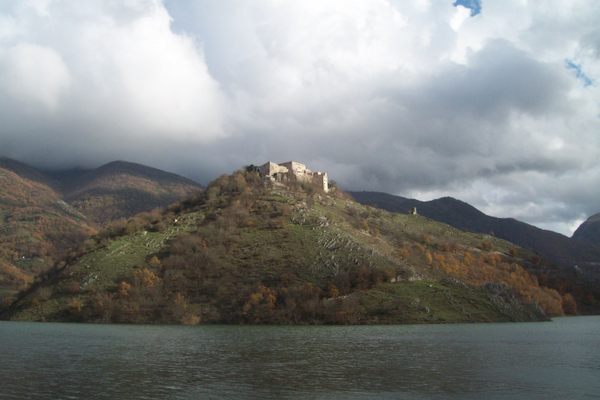Abandoned Petroleum Distribution Center
Traces of the thriving lake trade that once linked the Soviet Union with Mongolia.
Hatgal is a village with fewer than 3,000 inhabitants, though the number swells in the summer when tourists flock to town. It is situated on the southernmost tip of Lake Khovsgol, the largest lake in Mongolia by volume, and it stretches almost all the way to the border between Mongolia and neighboring Russia.
In the 1980s, the population was more than double what it is today. These were the golden days for Hatgal, when trade between Mongolia and the Soviet Union was at its peak. Being a satellite state of the USSR for 70 years, Mongolia had a very limited choice of trade partners, and Khovsgol Lake provided an optimal solution for transporting goods between the two Communist countries. In the summer, boats would ply the lake’s navigable routes, and in winter, trucks would travel on its frozen surface as if it were a highway.
Apart from being a thriving lakeside port town, Hatgat was also home to an important petroleum distribution center. Petroleum was imported from the USSR, stored in the massive tanks by the lake shore, and eventually distributed throughout Western Mongolia. The government of Mongolia introduced some laws restricting the amount of traffic over Lake Khovsgol due to increasing pollution. However, the real economic blow came in 1991, when the USSR collapsed almost overnight and trade plummeted to nothing.
The petroleum distribution has sat abandoned ever since. Of its original facilities, a couple of buildings on the lake shore that used to house administrative personnel are now badly cracked, but are still (barely) standing. Six huge metal tanks are still connected to the network of pipelines that used to carry petroleum to the furthest reaches of Western Mongolia. Four boats survived the test of time, two of which were probably used as oil tankers. Several other boats can be seen laying at the bottom of the lake.
To some, these facilities are eyesores on the shore of a beautiful glacial lake, but for anyone interested in industrial archaeology, they are important relics of a geopolitical era that is no more.
Plan Your Trip
The Atlas Obscura Podcast is Back!























Follow us on Twitter to get the latest on the world's hidden wonders.
Like us on Facebook to get the latest on the world's hidden wonders.
Follow us on Twitter Like us on Facebook